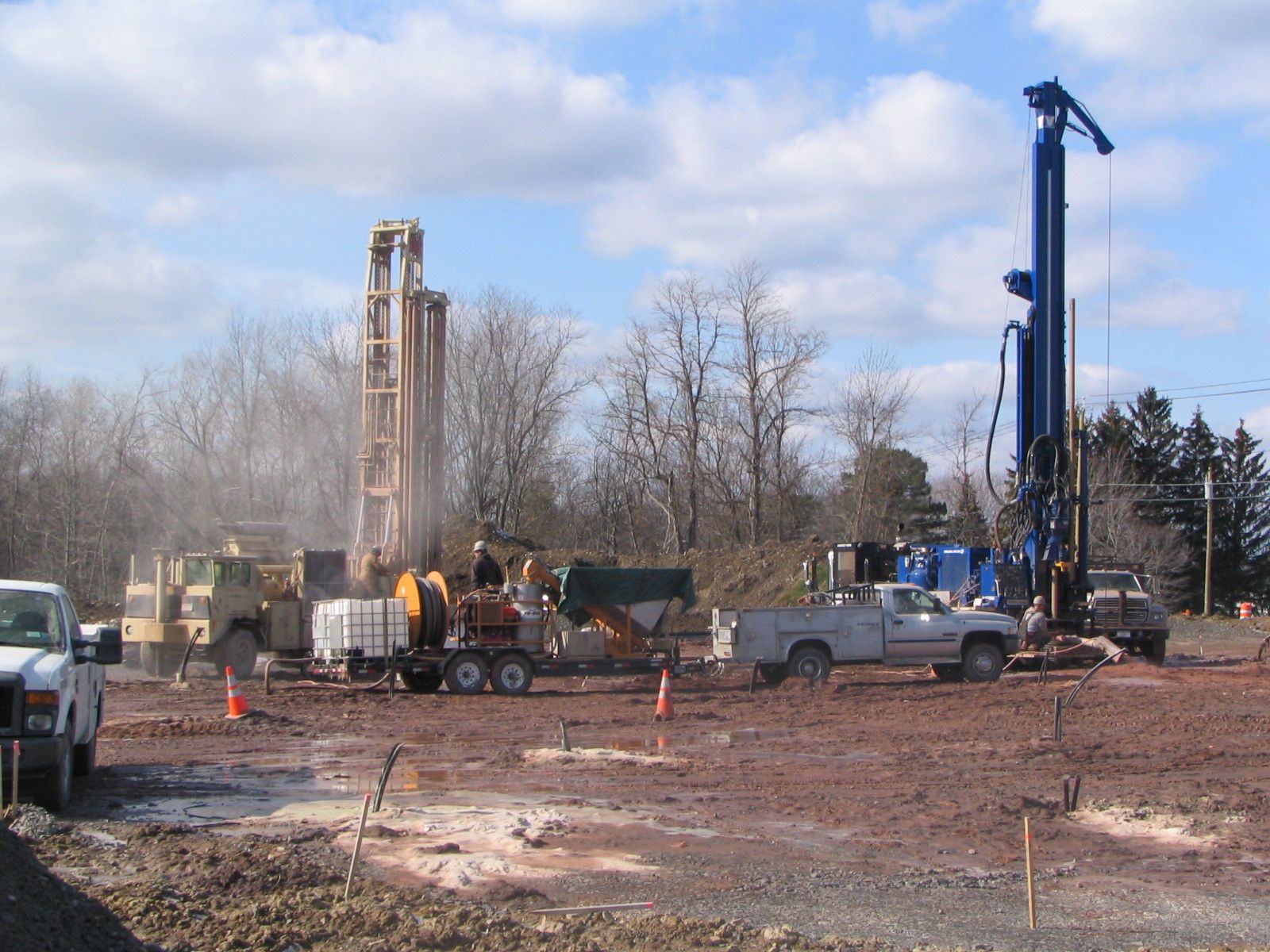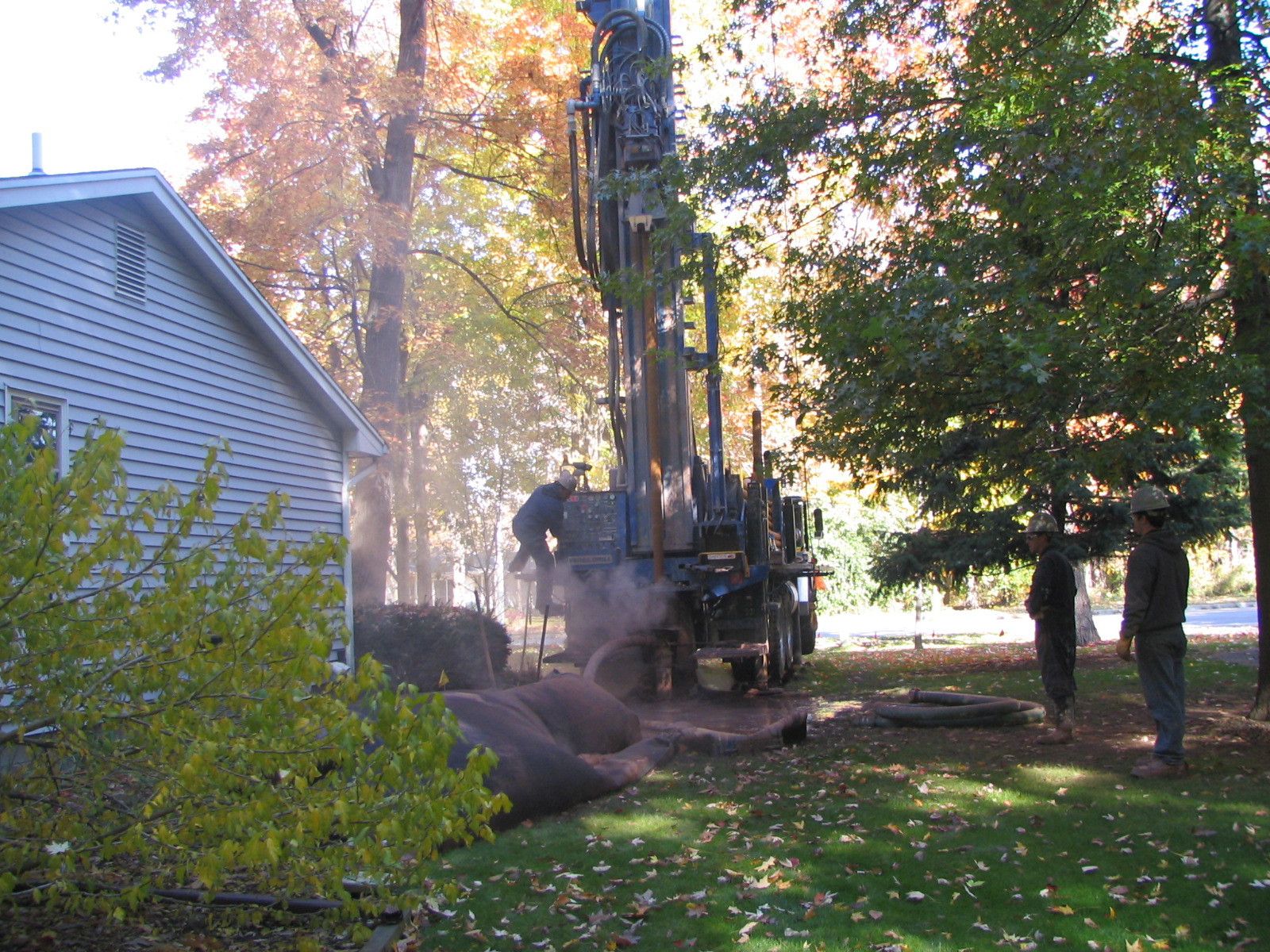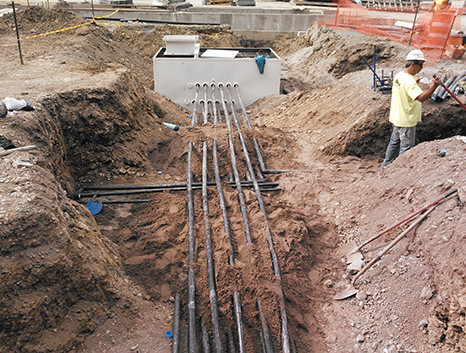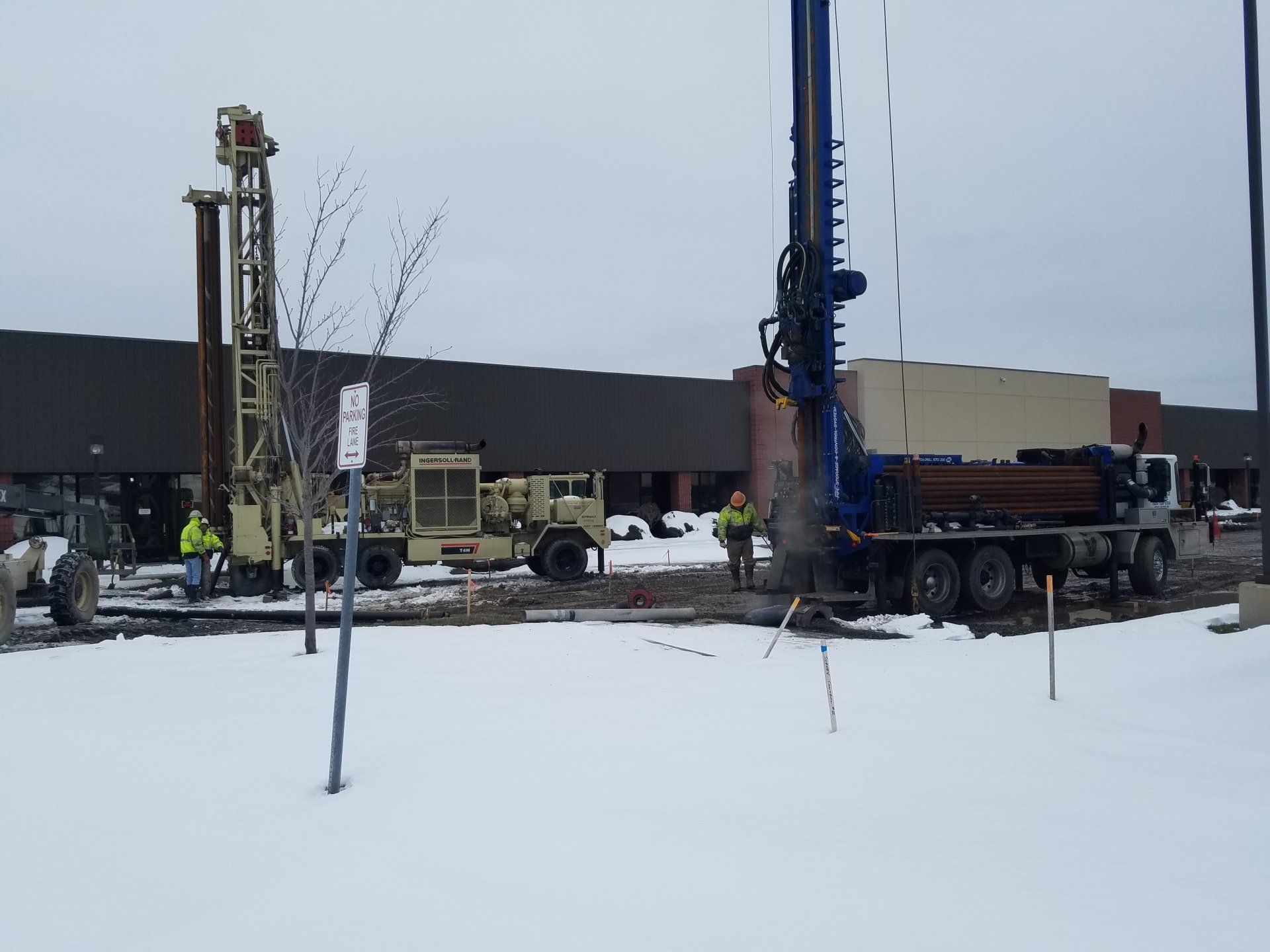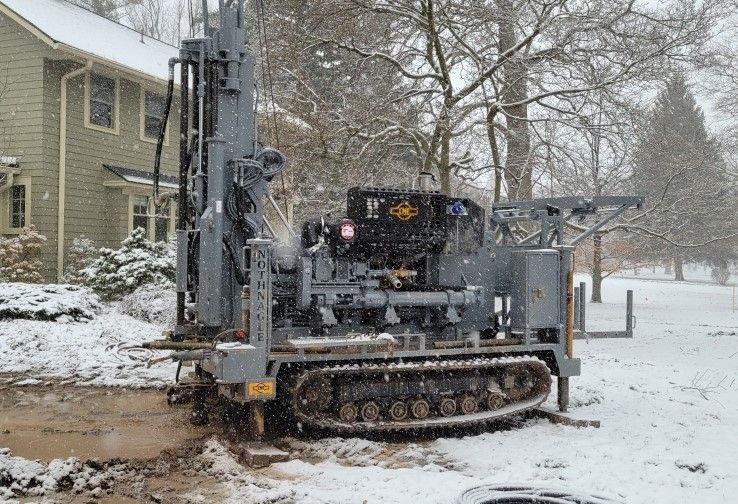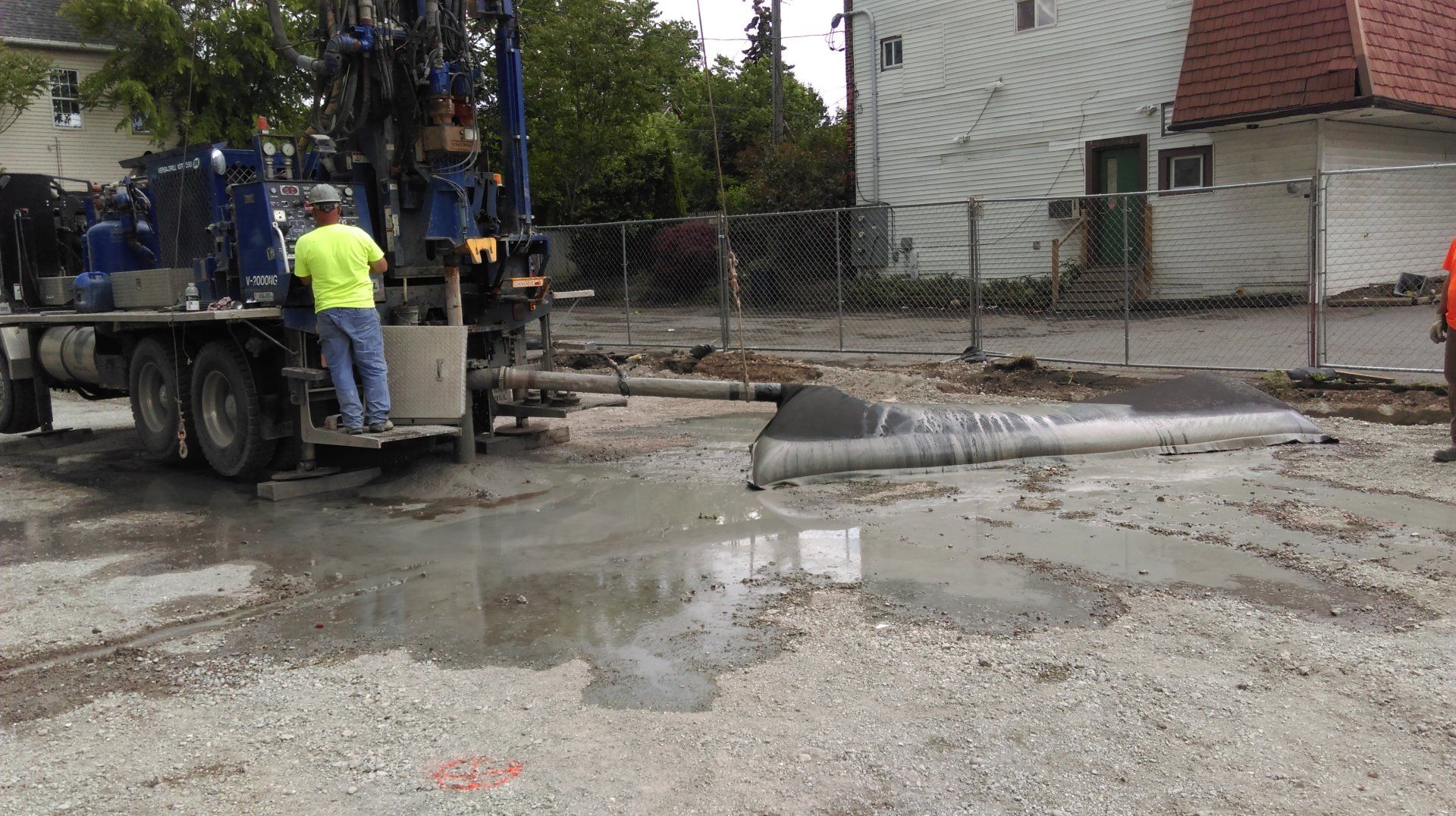GEOTHERMAL DRILLING SERVICES
FOR SYRACUSE, ROCHESTER, NY & THE SURROUNDING AREAS
Geothermal heating/cooling systems are growing in popularity because it is green energy, which provides better energy efficiency compared to conventional systems. Nothnagle Drilling, Inc. has properly installed numerous geothermal well fields from large commercial projects to single-family residential housing projects in the Rochester and Syracuse, NY areas. Our services included:
- Drilling the wells
- Inserting the HDPE vertical loops or U-bends
- Grouting the annuls space between the pipe and hole wall using proper techniques
- Trenching and fusing the horizontal headers into the building
- Geothermal Test Wells and Thermal Conductivity Reports
How Geothermal Works
Fundamentally, geothermal systems work differently than ordinary heating and cooling systems. Conventional systems have to produce heat by burning some type of fuel, typically propane, natural gas or fuel oil. Geothermal systems don’t create heat; instead they collect and distribute it from the earth.
First, you should realize that the earth absorbs and stores nearly half of the sun’s solar energy. As a result, at a depth of six feet it maintains a fairly constant temperature of 45 to 70 degrees F. The geothermal system taps into that free, renewable energy and puts it to work.
The earth’s natural heat is collected in the winter by a series of pipes called a loop system. Fluid circulating in the loop system carries this heat to the heat pump where it is compressed and released as warm air or water to raise the inside temperature of the building.
In the summer, this process is reversed in order to cool the home. Heat is drawn from the home, rejected to the loop and absorbed by the earth. The result is a comfortable home all year round.
Since most of the energy used for heating and cooling is from the earth, geothermal systems are the most efficient and environmentally friendly systems on the market today. Below are the different options in which you can utilize this technology.
Types of Geothermal Loops
-
Vertical Closed Loop or Geothermal Wells This configuration is used mainly when land area is limited or the owner wants a smaller footprint. A drilling rig is used to bore holes at a depth of 100 to 500' deep. A U-shaped coil of high-density pipe is inserted into the borehole. The holes are then back filled with grout. The wells are piped together 5' below ground and ran into the building.
Vertical Closed Loop or Geothermal Wells -
Horizontal Closed Loop or Slinky Used when adequate land area is available. Loop installers use excavation equipment such as a chain, trenchers, backhoes and track hoes to dig trenches approximately 4-6 feet. Trench length range from 100-300 ft/ton depending on the loop design and application.
Horizontal Closed Loop or Slinky -
Open System or Pump and Dump This system can be installed if an abundant supply of high quality well water is available. A typical home will require 4 to 8 gallons of water per minute. A proper discharge area such as another well, river, drainage ditch, stream, pond or lake must be present. Check for local restrictions before selecting a specific discharge method. The heat exchange comes directly from the ground water. Water quality is a major concern.
Open System or Pump and Dump -
Pond Loop A pond loop is an option if a large body of water is available within approximately 200 feet of the home. A ½ acre, 10 to 12 foot deep body of water is usually adequate to support the average home. The system uses coils of pipe typically 300 to 500 feet in length. The coils are placed in and anchored at the bottom of the body of water.
Pond Loop
